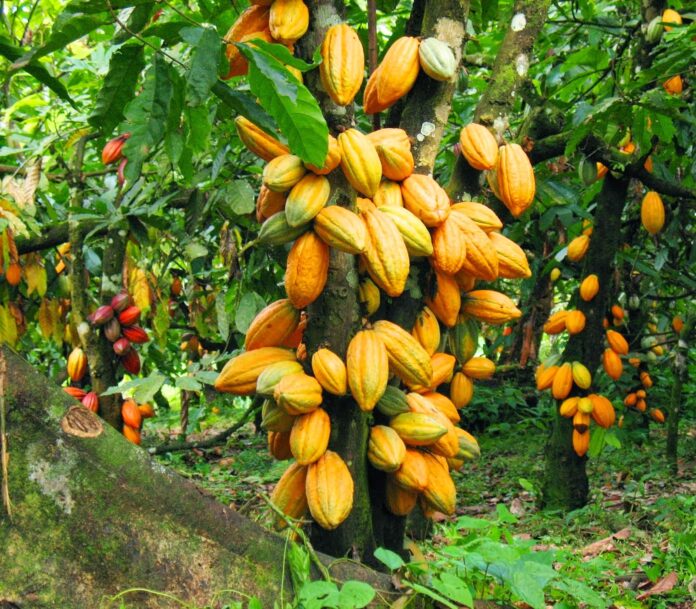Even before you think of establishing your cocoa nursery, you should have considered the site on which the seedlings will be growing permanently to give you the desired yields. This means you need to consider site selection for cocoa farming, and that is what we will look at in this piece.
Site selection for Cocoa farm
As you consider a suitable site for your cocoa farm, select a site that is relatively flat or with a gentle slope. Avoid steep slopes, marshy areas, areas with hardpans and rocky areas. An expert can help you choose a suitable site.
Good soil for cocoa farms.
Cocoa trees do well only in quality soil with suitable characteristics. We advise you to carry out Soil tests to make sure the under-listed characteristics are present.
- A good soil texture that allows it to retain a sufficient amount of water and had good drainage and aeration. This character is typical of loam and clayey loam soil.
- A soil of that property of good texture should be about 1.5meters deep. This is very important in areas where rainfall is poorly distributed or inadequate.
- Homogeneous soil structure to allow for easy roots penetration.
- Soil rich in nutrients and high in organic matter (about 3.5% of topsoil) with a pH of between 5 and 8.
Characteristics of Fertile and Productive Soil for Cocoa Farming
These are some characteristics of fertile and productive soil for cocoa farming that you look out for.
1. Complex physical and biological interactions
Involving the decomposition of rock minerals and organic matter to form inorganic nutrient ions in soil water.
2. Good soil texture
This is the relative proportions of stones and cobbles, gravel, sand, silt and clay in the soil. This property affects other soil properties such as aeration, water holding capacity, nutrient storage and water movement.
3. Optimum pH
This is how acidic or alkaline the soil is for plant growth which is the measure of the acidity or alkalinity of the soil, for plant growth.
The pH scale is from 0 to 14 with pH 7 as the neutral point. A pH below 7 is acidic and above 7 is alkaline.
Soil pH has a great effect on the solubility or availability of plant mineral nutrients. In the range 6.0-7.5 major nutrients and trace elements are available. When acidity increases, the major nutrients, particularly P become less available. Other nutrients; Fe, Mn, Cu and Zn become more available creating possible toxicity problems.
Soil pH also affects the activity of beneficial microorganisms. For instance, bacteria that decompose soil organic matter are not so effective in strongly acidic soils.
4. High amount of soil organic matter
This is the soil part we get from plant material and animals. It includes residues in various stages of decomposition, soil organisms, and their synthesized by-products. Soil organic matter contains all essential plant nutrients. It is, therefore, a storehouse of plant nutrients. The organic matter decomposes and releases the stored nutrients in a plant-available form. Moreover, organic matter binds together the soil components into stable aggregates. It also provides energy for soil microorganisms, improves water infiltration and holding capacity and reduces potential erosion. Soil organic matter indicates soil quality, health and productivity. It plays a significant role in soil processes such as cation exchange capacity.
5. Thriving and healthy soil organism community
This is the driving force behind nutrient cycling in the soil. Nutrient cycling is the decomposition of organic matter into simpler units and the synthesis of new products that plants can use. Soil organisms also play a critical role in the formation of the soil structure. Soil organisms are made up of microorganisms (earthworms, nematodes, mites, etc.) and microorganisms (bacteria, protozoa, fungi). One of the most important functions of microorganisms is in the decomposition of organic matter. This is done by a variety of soil bacteria and fungi. After decomposition, we get humus, which influences cation exchange capacity and water retention.
6. High Cation Exchange Capacity (CEC)
This is the ability of the soil to hold onto nutrients and prevent them from leaching beyond the roots. If a soil has a high cation exchange capacity, it is more likely to have a higher fertility level. This is because the retained cations are easily exchangeable with other cations in the soil solution and, so, are readily available for plant uptake. Clay and organic matter are the main sources of CEC. The more clay and organic matter (humus) a soil contains, the higher its cation exchange capacity.
In Summary
Good and productive cocoa farms start with a good site for cocoa farming.


